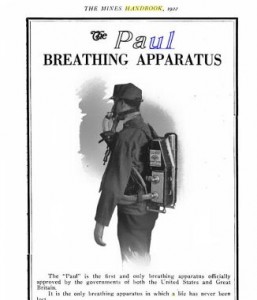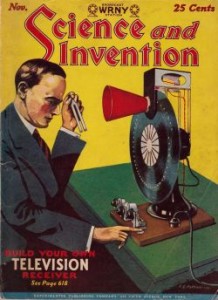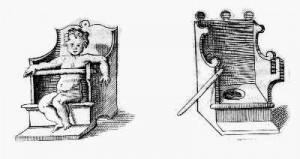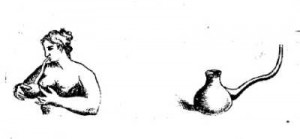On April 3rd of 1973, Martin Cooper, the leader of Motorola’s cell phone team, broke History. In a fashion reminiscent of Alexander Graham Bell 100 years prior, Cooper called Joel Engel, the research head of rival AT&T’s Bell Labs to say – “Joel, I’m calling you from a real cellular phone.” Historic breakthrough introductions such as this form the foundation of scientific discovery, and ultimately end up being printed in journals, on-line and in history books. Moreover, publications about scientific discoveries and inventions during times when documenting using paper was the only means available are in many cases items of collectible interest. Recording of technical specifications with the use of drawings in such original publications to describe scientific ideas and the creation of an apparatus or a gadget was a common practice by inventors prior to the invention of computer-aided tools. Some of these older books have, in a way, become the artifacts accompanying the invention.
In the oxymoron world of collectible rare books, the importance of the invention documented in the rare book is actually quite slight. In fact, other extraneous factors such as humor, obscurity of use and even uselessness, are big contributors in attracting interest and ultimately boosting the value of such books. Included below is a list of such books, in order to exemplify the importance of irrelevance when it comes to “books on inventions.”
 1. In his book “An essay on suspended animation,” Philadelphia: Edward Parker 1823, Samuel Colhoun describes his convoluted experiments on resuscitation from asphyxia. The engraved frontispiece of the book illustrates the mechanical, technological apparatus he invented to replace the simpler and far more productive process of mouth-to-mouth respiration.
1. In his book “An essay on suspended animation,” Philadelphia: Edward Parker 1823, Samuel Colhoun describes his convoluted experiments on resuscitation from asphyxia. The engraved frontispiece of the book illustrates the mechanical, technological apparatus he invented to replace the simpler and far more productive process of mouth-to-mouth respiration.
2. Omnoboni Ferrari, in his 1577 book “De arte medica infantium, libri quatuor….,” Brescia: Francesco and Pietro Maria Marchetti, describes, among some diseases particular to children, the management of wet nurses and the care and feeding of newborns. Way ahead of its time, the book also describes and illustrates a self-operated breast pump for extracting milk, a device for training children to walk, a child’s stool with a toilet and a child’s helmet similar to today’s bike helmet, designed to protect the child’s head from injury.
3. On the more serious side of a self-contained oxygen breathing apparatus, the United States Government Printing Office started releasing around 1923, its authoritative handbook for underground miners. The U.S. Department of the Interior, Bureau of mines used the handbook to describe the operation of the Paul Apparatus, with a fold out drawing of its circulatory system details.
On the more serious side of a self-contained oxygen breathing apparatus, the United States Government Printing Office started releasing around 1923, its authoritative handbook for underground miners. The U.S. Department of the Interior, Bureau of mines used the handbook to describe the operation of the Paul Apparatus, with a fold out drawing of its circulatory system details.
 4. In an early vellum-backed folio with the long title “Coelestium rerum disciplinae….uariorum astrolabiorum compositionem seufabricam,” Moguntiae (Mainz): Petrus Jordan, 1535, Johann Stoeffler explains his treatise on the construction and use of the astrolabe. The astrolabe was an apparatus that could slightly be compared to a Renaissance version of a GPS. It was quite handy to anyone who wished to locate and predict the positions of the sun, moon, planets, and so forth, determining local time while estimating local latitude. The book contains clear and concise instructions on how to lay out its components, as well as how to use it to figure out what seems to be the common problems of the time.
4. In an early vellum-backed folio with the long title “Coelestium rerum disciplinae….uariorum astrolabiorum compositionem seufabricam,” Moguntiae (Mainz): Petrus Jordan, 1535, Johann Stoeffler explains his treatise on the construction and use of the astrolabe. The astrolabe was an apparatus that could slightly be compared to a Renaissance version of a GPS. It was quite handy to anyone who wished to locate and predict the positions of the sun, moon, planets, and so forth, determining local time while estimating local latitude. The book contains clear and concise instructions on how to lay out its components, as well as how to use it to figure out what seems to be the common problems of the time.
Any type of document relating to an Invention that achieved a completely unique function or resulted in a radical breakthrough, may deem quite valuable a few years down the line. Even in today’s hi-tech world that is filled with wonderful inventions, it is important not to ignore the possibility that scarce technology documents could become quite valuable someday. Case in point: The Apple-1 Operations Manual, published in 1976 by Apple Computer Co., consisting of 10 black and white pages, is one of the most sought after hi-tech publications in the market today.



{ 0 comments… add one now }